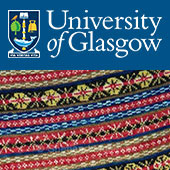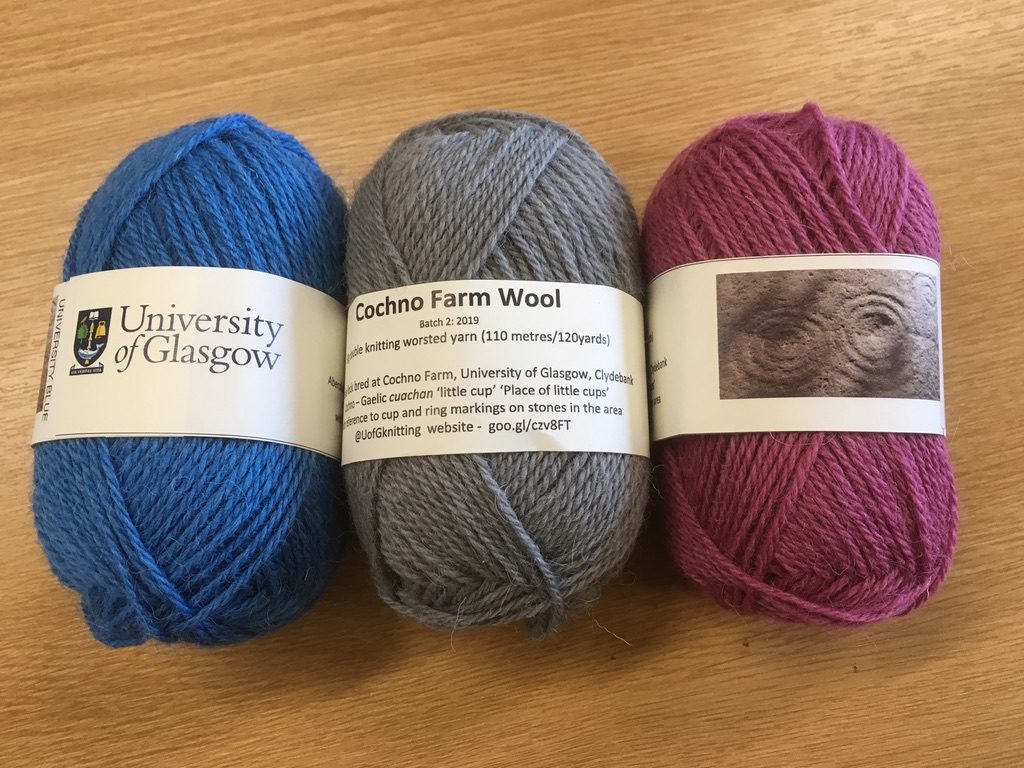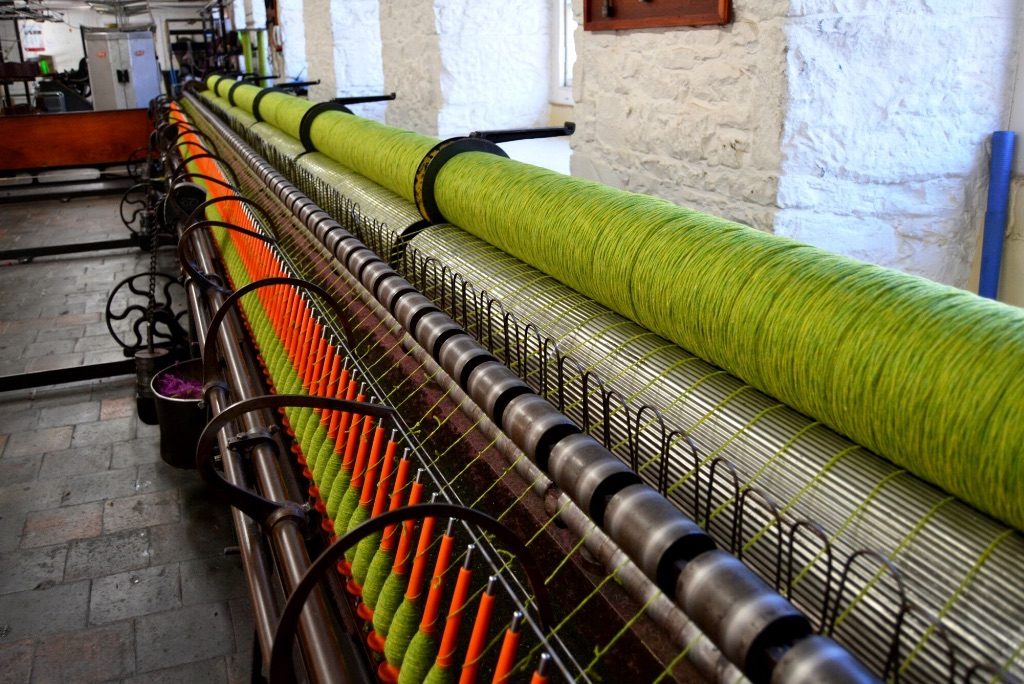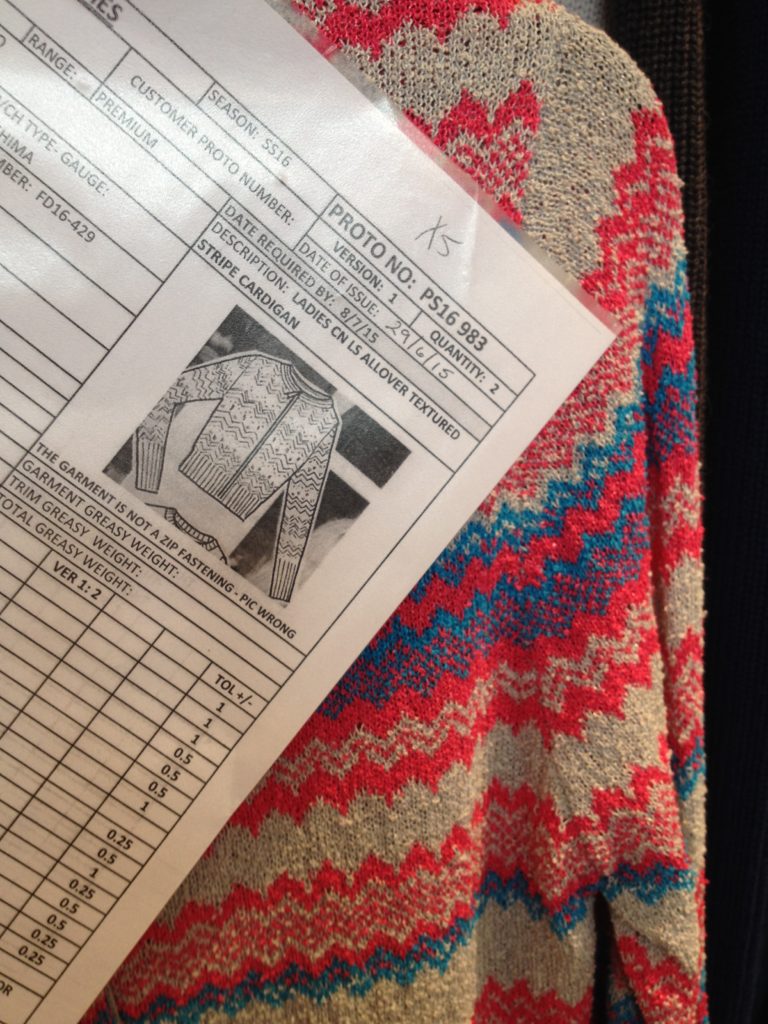
Knitting is having (another) moment. As we all have a little more time to devote to craft and doing something creative and industrious with our hands takes our mind off world events, knitting offers a welcome respite and distraction.
So how timely that the Knitting in the Round team at the University of Glasgow recently commenced research on a major new project funded by the AHRC on the history of knitted textiles in Scotland. The virus might have (temporarily) restricted our ability to travel the length and breadth of Scotland uncovering evidence of knitting’s embeddedness in the Scottish economy and culture, but we are carrying on nonetheless, utilising online sources and reaching out to knitters and former knitwear workers via social media so that when we are released from our homes we can hit the ground running.
We use Twitter @uofgknitting to communicate our activities and reach out to knitters worldwide. Please follow us there if you want to keep up with the project activities and findings or subscribe to this blog.
We will be calling out to knitters everywhere in this unprecedented time to #showusyourknits and we’ll be following the efforts of one of our team to learn to knit #knitalongwithsally
We will also be updating you all on the progress with our own University of Glasgow Cochno Farm wool and our University of Glasgow Knitting Pattern Book.

The project
Scotland is internationally renowned for its woollen textiles and certain variants on knitting styles have global recognition, eg, Fair Isle and Sanquhar colourwork patterns, Shetland knitted lace, textured Gansey techniques from coastal communities. However, knowledge of the production and dissemination of these and other traditions, and their sustainability and adaptation in economic and cultural terms, over the last 200 years is extremely limited. This project’s aim is to transform understanding of a) creativity: the relationship between materials, designs, techniques, and skills used to produce knitted textiles across Scotland; b) authenticity: why and how knitted textiles have become synonymous with Scottish heritage and c) sustainability: how knitting has survived—through adaptation—as both an indigenous craft and industrial practice from the late-eighteenth through late-twentieth centuries, and what is required for its survival in the twenty-first century and beyond.

The key research question is thus: Why and how has the practice of knitting in Scotland survived the process of economic and cultural modernisation? This national case study will inform two questions with international reach and significance: a) how are creative practices embedded in broader economic systems (including gendered structures of work, skill and leisure); b) to what extent are these creative economies tied to place of origin? These questions are, ultimately, about sustainability, of personal handicrafts and industrial traditions; agricultural landscapes and urban factories; and communities constructed around place, occupation, gender, and age. The principal aim, therefore, is to undertake an empirical investigation of the history of knitted textiles in Scotland from the late-eighteenth century, when industrial production began as an alternative (rather than replacement) to continuing practices of domestic and manual production, through the twentieth century, when de-industrialisation challenged some aspects of the textile sector, while also offering opportunities in other aspects. This project uniquely takes a holistic approach to the history of Scottish knitted textiles as an example of how creative economies and craft practices are embedded in larger economic and cultural systems.
By examining knitted textiles ‘in the round’, from fleece to fashion, we aim to identify the interconnections between different elements of the sector (hand and mechanised production for instance, or wool/yarn production and design).

Thus the project is interested in handknitting and machine knitting, home production and factory production, yarn spinning for the handknitting and hosiery/knitwear sector and knitwear production and retail. We intend to look at some of the well known large-scale producers in Scotland (Peter Scott, Patons & Baldwins, Johnstons of Elgin) to small and medium sized companies and sole entrepreneurs. We are working alongside partners Di Gilpin knitwear, Border Mill, Shetland Museum and Archives and A’the Airts community arts and crafts centre in Sanquhar.

And we will be harnessing the tremendous enthusiasm, knowledge and skill of the knitting community.
We hope to be able to hold our conference in 2021 but meantime we will be reaching out via Twitter @uofgknitting


Will follow this on Twitter – and hope that you will be able to include an acknowledgment to the Scots knitting heritage here in Australia as well.
Absolutely! We are really interested in how patterns and techniques travelled and how Scottish companies like Patons & Baldwins set up branches overseas – P&B were in Tasmania (for the wool obviously!)
Lynn
I am disappointed that you use TWITTER as your main communication tool.
Science should not depend on data-collecting bullshit-software but on reliable means
I am sure you could find other or additional tools for communication
I, for sure, won’t use TWITTER but I am thoroughly interested in your research
Please, do think it over!
Dear Connie
I hear you. We don’t use Twitter as our main communication tool. We use a variety of platforms including this blog and our University webpage which you can find here :
https://www.gla.ac.uk/schools/humanities/research/historyresearch/researchprojects/knittingintheround/
We also hold a variety of public events (some of which may need to go online) and we have a conference planned for 2021.
with best wishes
Lynn
Lynn,
I too am very interested in your project. My research is about knitwear in the period 1800-1840 in north Atlantic trade. I don’t do twitter.
Please tell me how I can be added to your mailing list about the 2021 conference!
Thanks.
from Nevada
Dear Alice
I will put you on our list. We may need to postpone the conference until later in the year depending on the pandemic and travel but we will keep people updated.
We would be very interested in your research
Lynn